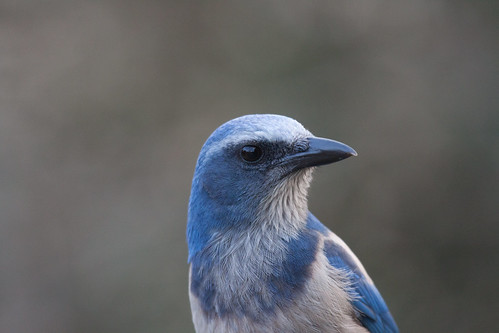I keynoted at this great festival in 2013. Best looks EVER at Swainson's Warblers!
Tuesday, February 17, 2015
Stupid Is as Stupid Does
 |
| Pine Siskin |
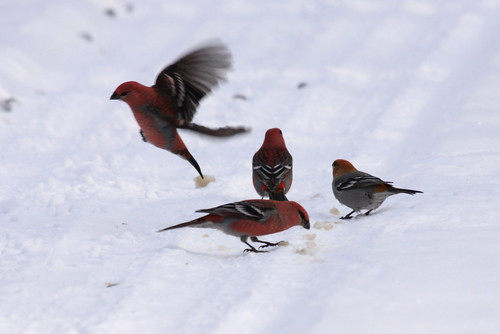 |
| Pine Grosbeaks on road. |
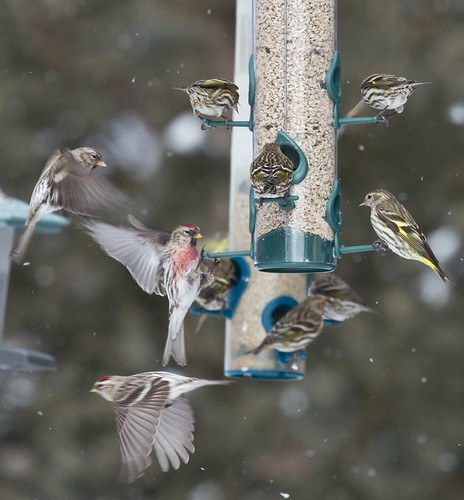 |
| Pine Siskins and Common Redpolls |
The more scientists reveal about bird intelligence and individual variation, the more strenuously people seem to grab onto that popular meme that individual animals don’t matter—only populations. I’ve always found that a depressing concept, because it’s so egotistical. In terms of wildlife management and conservation, of course the focus must be on populations, but within these two disciplines, our sense of the appropriate size of populations is informed not by what is best for the larger world but by what will serve a given human “user group.” Red-winged Blackbirds are slaughtered by the millions in western Minnesota and the Dakotas every spring to appease sunflower growers. Cormorants are slaughtered in many areas to appease sport and commercial fishing interests. Meanwhile, white-tailed deer and Canada Goose numbers have been “managed” to bring them to unsustainable levels over decades, to please hunting interests, even after it was obvious that their numbers were growing too large for the health of major habitats and competing species. Now we’re watching that exact same ecological disaster slowly unfold with Wild Turkeys. Meanwhile, I hear the same delight in shortsighted people seeing turkeys in their area for the first time that I heard back in the 70s when people were so thrilled to see Canada Geese raising young in places they’d never before bred.
We are supposed to be the smartest species on the planet. We could use our intelligence to look at the Big Picture of population levels even as we see the Little Picture—the value of individuals of all species. We could learn from our mistakes. We could use our supposedly superior awareness to notice the beauty all around us. And we could use our supposedly superior ability to plan ahead so we’d leave early enough to drive a little slower during times when birds gather on our roadsides. Forest Gump famously said “stupid is as stupid does.” The same also could be said of human intelligence.
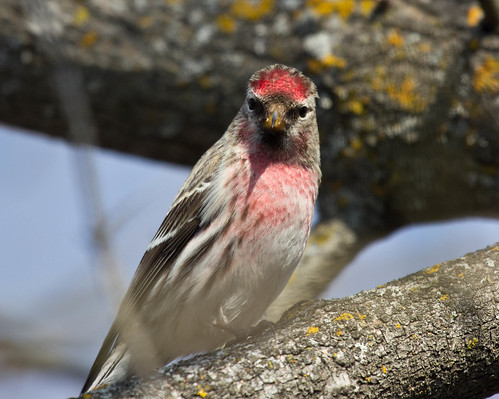 |
| Common Redpoll |
Saturday, February 14, 2015
How did you spend your Friday the Thirteenth and Valentine's Day?
(rewritten for my radio show script Feb. 16)

I managed to find a unique way to combine both bad luck and
the heart to mark this year's back-to-back Friday the 13th and Valentine's Day.
Thursday night I had a mild heart attack. Friday, after everything was stable,
they did an angiogram, which indicated that I have a congenitally enlarged coronary artery.
Apparently a clot developed there and then got blocked from passing into a more
normal artery. I've been on blood thinners since as soon as I was admitted, so am
entirely out of danger. I didn’t need a stent or any surgery at all. I'll be
taking medications and use one of those days-of-the-week medicine things now,
so can officially feel old and decrepit with a minimum of actual problems
associated with it. This was pretty much a best-case scenario for a heart
attack. It was indeed scary, but after receiving excellent care at the hospital and now some follow-up appointments and 36
sessions of cardiac rehab, I’ll be entirely in the clear.
Usually at this point in a radio program, I’d talk about whether or
not birds have heart attacks, and get into lots of cases. I’ll just say, yes
they do—both from clots and from other causes, especially associated with their high blood pressure. Fighting males rarely but occasionally have
keeled over dead from their heightened blood pressure actually blowing out a
hole in the heart or a coronary artery.
But I’m going to break my normal pattern this
time because I’m extremely lucky that I realized I was having a heart attack.
Symptoms in women are way different from those we usually hear about. I did not
feel ANY pain or tightness or heaviness in my chest when I decided I was
probably having a heart attack. I just suddenly, after getting ready for bed
about 10 pm, had a fuzzy, weird feeling in my chest, a sensation that was
running up my neck to my jaw. The sensation itself made me feel a little
panicky, so when I climbed into bed, I kept sitting up and thinking I just felt
wrong.
The possibility of a heart attack was on my mental radar
screen because in the past couple of months or so, I’ve had four or five dizzy spells that
lasted only a few seconds. They felt weird and nothing like anything I've felt before, but I couldn't see making an appointment unless they got worse. Also, for two or three days before the heart attack,
my face looked paler in the mirror to me. My father died early one morning when he was only 50
from a massive heart attack, and my aunt, his sister, died this summer after
waking up, getting out of bed, and simply dropping dead. In my last photos of
both of them, their faces seemed unusually pale.
I’m not particularly
superstitious, but it did occur to me that, uh oh—if this was an actual heart attack, there
was a pretty good chance I’d climb out of bed on Friday the 13th and
keel over dead. And that made me think of the puppy I’m getting in 5 weeks—how
much I want to be healthy to train and play with her, and how she deserves a
healthy owner.
I still thought if this was a heart attack, I should be
experiencing some actual pain, so I opened my iPad and googled heart attack
symptoms. They all started with descriptions of massive chest pain or pressure (like that "elephant sitting on your chest" I'd read about) radiating
down the left arm, but then got into more vague symptoms, and all specifically
mentioned jaw pain, especially in women. I wasn’t having pain, but my neck and
jaw as well as chest had that fuzzy, weird sensation.
So Russ ushered me to the hospital. The guy at the door
admitting patients looked rather skeptical, but the moment he let me through, I was ushered away, with a whole team wiring me to an EKG machine and an IV and taking blood tests and I don't know what else.
My EKG was slightly abnormal.
The first blood test for a protein called Troponin that is released into the
bloodstream after a heart attack was negative, but they were concerned about
the EKG, and the next time they did the blood test, it
was, indeed positive. Six hours later, it had risen even more. So the event was
an actual heart attack, and it turns out that it was very lucky I went in
before it became a massive one. Those strange symptoms women tend to show,
which often do not involve pain, are too often not taken seriously until it is
too late.
So there you have it. I guess I dodged a bullet. But really, if I had to have a heart attack, could the timing have been better than the weekend when Friday the 13th and Valentine’s Day collide?
**I don't want to be answering everyone's questions about this ad infinitum. This was not an aortic stenosis, I have no problems with valves, and virtually no plaque buildup. And I do not need anyone's suggestions for or critiques of my treatment. I'm doing what I'm supposed to be doing and thinking about my puppy.
**Additional update: I had to be hospitalized again due to a horrible reaction to Lipitor. Fortunately, my blood cholesterol levels are only marginally high and there was no evidence of any significant clogging of my arteries—just that genetic aneurism—so statins aren't really called for in my case anyway. This was way more debilitating than the heart attack itself, but I'm back on the mend.
**One final point: Having a heart attack is terrifying. I am trying to make light of it, partly to reassure my family and friends that the probabilities of my keeling over dead haven't risen too dramatically above what they are for any reasonably-in-shape 63-year-old, and partly because that's the way I always cope with things. But just because I am trying to deal with it as best I can does not give anyone the right to make jokes about it, and especially not to say "I thought you had a sense of humor." This is a no brainer, and as far as friendships go, a deal breaker.
So there you have it. I guess I dodged a bullet. But really, if I had to have a heart attack, could the timing have been better than the weekend when Friday the 13th and Valentine’s Day collide?
**I don't want to be answering everyone's questions about this ad infinitum. This was not an aortic stenosis, I have no problems with valves, and virtually no plaque buildup. And I do not need anyone's suggestions for or critiques of my treatment. I'm doing what I'm supposed to be doing and thinking about my puppy.
**Additional update: I had to be hospitalized again due to a horrible reaction to Lipitor. Fortunately, my blood cholesterol levels are only marginally high and there was no evidence of any significant clogging of my arteries—just that genetic aneurism—so statins aren't really called for in my case anyway. This was way more debilitating than the heart attack itself, but I'm back on the mend.
**One final point: Having a heart attack is terrifying. I am trying to make light of it, partly to reassure my family and friends that the probabilities of my keeling over dead haven't risen too dramatically above what they are for any reasonably-in-shape 63-year-old, and partly because that's the way I always cope with things. But just because I am trying to deal with it as best I can does not give anyone the right to make jokes about it, and especially not to say "I thought you had a sense of humor." This is a no brainer, and as far as friendships go, a deal breaker.

Wednesday, February 4, 2015
Why I'm Not a Birding Guide
 |
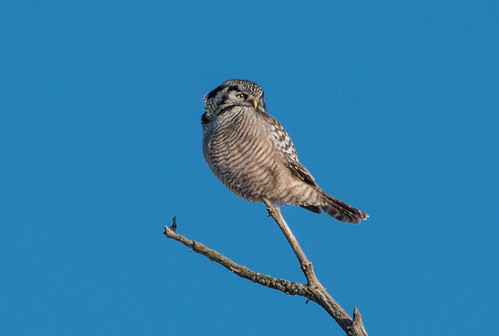 |
| Superb Owl Sunday Northern Hawk Owl |
But it was also an exhausting one. I put over 700 miles on my car, making it expensive and energy-intensive as well—much more than if I were covering the same area on my own, not feeling like I had to go back repeatedly to spots where we missed a single “target bird.”
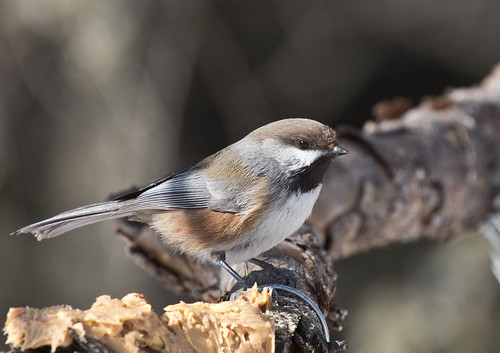 |
| Boreal Chickadee: One of the target birds we got skunked on |
 |
| My first Illinois Eurasian Tree Sparrow--bonus bird when I was in Quincy, Illinois. You win some, and you lose some. |
When it comes down to it, I’m a moseyer. Like any other birder, I love having as long a list of species as possible for a given jaunt, and measure my skills by the birds I pick out by sight and sound. When I started birding, before I'd brought my life list to over 600 for the Lower 48, I was pretty intent on that milestone, but even when I was most acquisitive, except on specific "Big Days," I've never enjoyed birding just to have a long list of species.
When I was amassing my own life list and Russ and I took trips to new places, I loved exploring on my own. We covered all the best spots in Florida, southeastern Arizona, the Rio Grande Valley of Texas, Florida, and California following instructions in birding books and checking out spots that looked interesting or just happened to be near where Russ had to be for something else, as well as the spots pinpointed in the birding books. The pleasures came from getting a feel for different habitats and how to find different birds in new places entirely on my own.
Even when I did my Big Year, when part of the whole point was to amass a big list, I did most of the birding by myself—somehow birds feel more earned and “mine” that way. I did have some special target birds for which I spent an inordinate amount of time searching, like the Colima Warbler for which I hiked twelve miles, alone in the rain, in Big Bend National Park, and the Hermit Warbler for which I went to San Lorenzo Park in Santa Cruz, California, three times before I finally got the bird--though each time I went there, I had plenty of other wonderful experiences, as well.
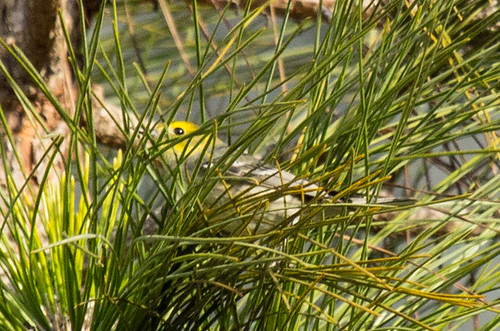 |
| Crappy photo of a Hermit Warbler--a target bird I specifically searched for three times before I finally saw. |
 |
| Anna's Hummingbird: One of the bonus birds I saw one of the times I was missing that Hermit Warbler. |
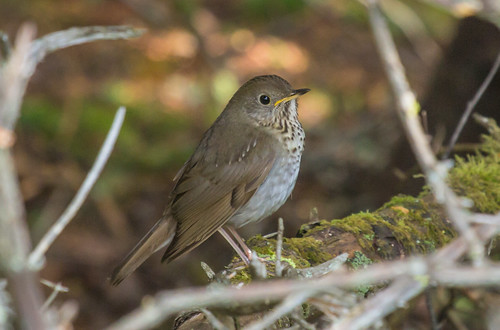 |
| Bicknell's Thrush seen on the Mt. Washington Auto Road tour. |
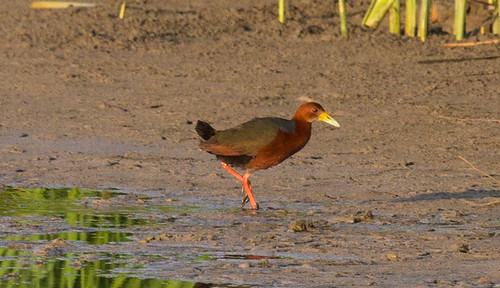 |
| Rufous-necked Wood-Rail |
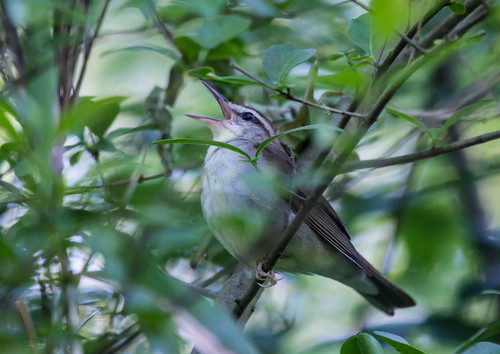 |
| Swainson's Warbler found by Mia Revels in Oklahoma. |
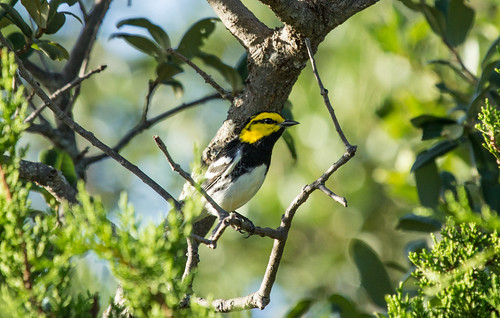 |
| Golden-cheeked Warbler in Balcones Canyonlands. |
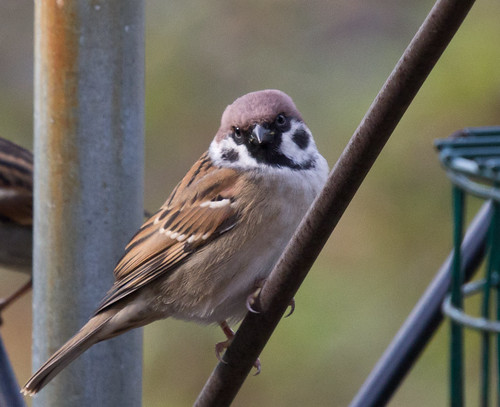 |
| Eurasian Tree Sparrow in my friend Susan's backyard. |
But I'm really too much of an introvert to enjoy large group birding too often. And there is no way on earth I'd be good at actually leading an organized tour. I forget about food and am perfectly content to sleep in my car when I'm having fun birding. You can't hear a Flammulated Owl calling all night long from even the finest motel, while I got to do just that when sleeping in my car in Water Canyon in New Mexico. Normal people expect meals and a bed to sleep in and have other needs I just don't want to deal with. And I'm completely out of my element at explaining what expenses and responsibilities other people should take care of themselves when birding with me, so I'm easily taken advantage of as well.
I read a lot of posts by birding guides on Facebook, and am always impressed by how they can go out, day after day, week after week, showing each individual of each group a huge number of birds. They earn their pay with their skills, ability to juggle logistics, and unflagging focus and ability to keep moving on to the next bird while ensuring their participants all have a satisfying experience. It was fun for me to get out for one weekend for the first time in years to show someone around the north woods. But the experience reminded me that at heart, I really am an introverted moseyer.
Recently I discovered that a few bird guides and photographers up here have been publicly ridiculing me, claiming that all my knowledge comes from reading about birds rather than going out and actually experiencing them. That's hurtful, of course, as well as patently false, but I don't even know how to begin to answer that kind of silliness. Fortunately, most of the birders up here, like everywhere else, don't need to cut down anyone else to carve their own place in the birding world. As Robert Frost might have put it, birders work together, I tell you from the heart, whether we bird together or apart.
I can’t wait to get my new puppy. I’ll take Pip everywhere birding with me. I may have named her for a character in Great Expectations, but the great thing about puppies is they don’t have any expectations. For her, our tracking down every pigeon and nuthatch will be an adventure, and when we don’t see the birds I want, she’ll be perfectly content with what we do find. That, for me, is what the funnest birding is all about.
Subscribe to:
Comments
(
Atom
)

